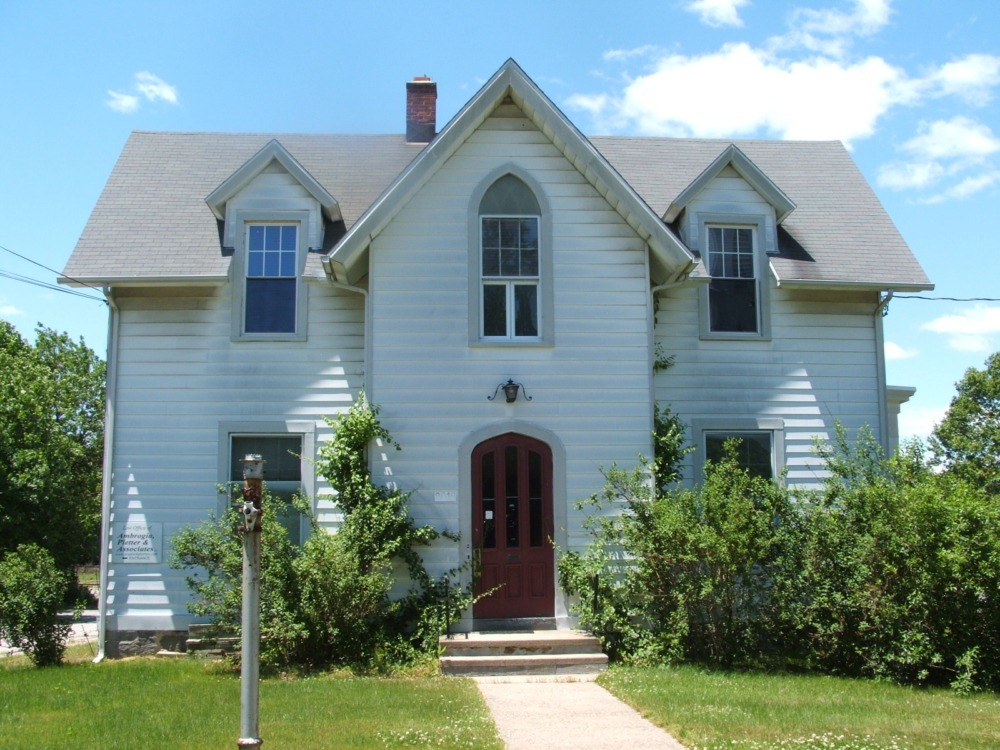You took on a developer and town government and WON
A house located at 2019 Main Street, the Lillie Devereux Blake house; is an important part of Stratford’s history. Built in 1856 by Lillie Devereux Blake’s mother, Sarah Elizabeth Johnson Devereux, it sits on what was part of the William Samuel Johnson estate and called Elm Cottage.
The house is an American Carpenter Gothic. Most American Carpenter Gothic structures are listed on the National Register of Historic Places, which may help to ensure their preservation. Many, though, are not listed and those in urban areas are endangered by the increased value of the land they occupy. Apparently this was the case in Stratford.
In June Kaali-Nagy Properties submitted an application to the Stratford Zoning commission with a proposal to build a 100-unit apartment complex at 2009-2019 Main Street referred to as The Village. The developers of The Village intended to raze the house and replace it with 6 residential units “that will appear to be part of the neighborhood”.
Their plans were posted on Stratford Facebook pages, an on-line petition was created on Change.org, contact information on the Mayor and members of the Zoning Commission were posted – and in one week this is what happened next: This excerpt is from the July/August issue of Connecticut Preservation News:
Stratford-
Facing broad public sentiment, a developer dropped plans to demolish the home of an important but little known 19th-century author and feminist. In the years around 1860 Lillie Devereux Blake (1833-1913), lived in a Gothic Revival house (c.1855) on Main Street in what is now the Stratford National Register district. Her novel Southwold, published in 1859, is set in the town. Later, she became a leading figure in the women’s suffrage movement. The Kaali-Nagy Company of New Canaan had proposed razing the house for a six-unit apartment building to accompany a new 97-unit building to be built at the rear of the property. An online petition garnered more than 1,000 signatures, and on June 24 the town zoning commission approved revised plans with the requirement that the house be preserved and incorporated into the development. Damian Kaali-Nagy told the commission, “We understand and have great admiration for period and architectural identity… We will preserve at least the primary and architecturally significant portion of the existing building.” Blake’s childhood home in New Haven was demolished by Yale University in 1999, after a protracted preservation battle.
Lillie Devereux Blake (aka Elizabeth Johnson Devereux) was a noted woman suffragist, reformer, and writer. She is a direct descendent of Samuel Johnson, William Samuel Johnson, Judge Samuel William Johnson, and Rev. Jonathan Edwards.
In 1869 she joined the woman’s suffrage movement. She worked alongside Susan B. Anthony , and, after visiting the Woman Suffrage Headquarters and meeting Mrs. Elizabeth Cady Stanton and others prominent in the movement, Lillie decided, “They’re ladies,” and began to participate actively. Lillie played a prominent part in the National Woman’s Suffrage Association (where she was unanimously elected president of the New York State Woman suffrage Association, an office she held for 11 years) and the American Woman’s Suffrage Association . Her writing was channeled to the movement and included a contribution to the Woman’s Bible, a publication based on Biblical criticism and ecclesiastical history, proving that there was “no explanation for the degraded status of women under all religious, and all so-called ‘Holy Books.'” The book created a sensation when it was printed in 1895, with widespread coverage in New York papers. The clergy declared it the work of Satan.
Lillie was a natural organizer. She worked on the national level, but her chief success was in the state of New York. She championed the working people, particularly the women An active lobbyist in the legislature, she pled for school suffrage, equality of property rights, women factory inspectors, women physicians in hospitals and insane institutions, and police matrons. A Committee on Legislative Advice was organized with her assistance, to help other suffragists; her leaflet of instructions was printed in the Woman’s Journal. She succeeded in seeing the passage of legislation granting women the first vote in state elections and the right to become trustees of schools; with the support of Governor Theodore Roosevelt and over “the persistent opposition of the New York Police Department,” a bill was passed providing for police matrons. Further legislation allowed women to retain citizenship following marriage to a foreigner, and her final accomplishment was the enactment of an equality of inheritance law by the New York assembly.
She was one of the active promoters of the movement that resulted in the founding of Barnard College. In 1869, she visited the Women’s Bureau in New York and soon after, began speaking all over the United States in support of female enfranchisement. She
earned a reputation as a freethinker and gained fame when she attacked the well known lectures of Morgan Dix, a clergyman who asserted that woman’s inferiority was supported by the Bible. Her lectures, published as Woman’s Place To-Day rejected this idea, asserting in one instance that if Eve was inferior to Adam because she was created after him, then by the same logic Adam was inferior to the fishes.

